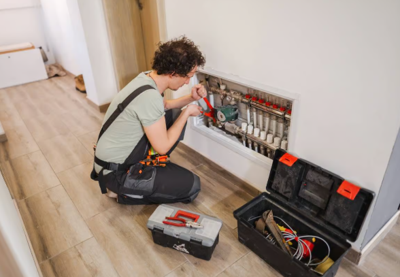
As you prepare for the upcoming winter season, it’s essential to check key appliances in your home, especially your heating system, which will keep your home warm when temperatures drop. For your convenience and peace of mind, follow this comprehensive checklist before the heating season kicks in.
Schedule a Full Service
Winters demand the most from heating systems, so you must ensure yours is in good shape. Contact your trusted heating service experts to schedule a service for an in-depth examination of the system, including checking the filters, ignition systems, thermostats, and boiler. Experts can inspect for any wear and tear, clean the internal components, and verify that all safety measures, such as carbon monoxide detectors, are functioning as intended.
If required, experts can also replace dirty air filters; clogged filters are notorious for increasing the likelihood of failure and driving up bills due to increased energy consumption. Additionally, they’ll check if all controls and wiring are secured so that the system runs smoothly throughout the heating season.
Test the System Yourself
Even before you schedule a service visit, you can run a test yourself to check if your system is running correctly. If your system doesn’t run year-round, switch it on to see if the thermostat is responding accurately. Set a timer to see if the room heats up as required, and check if all the timers and settings are aligned with your preferences. If the system isn’t working, you can opt for a service or upgrade the system altogether for better heating and energy savings.
Empty the Radiators
Radiator emptying, or bleeding, is an integral step to restore optimal performance before winters arrive. Trapped air in the radiators can quickly create insufficient heating due to a higher number of cold spots, so bleeding them is necessary. Use your radiator key to release all the trapped air, and move from the furthest radiator from the boiler to the nearest one.
Check the Ducts, Vents, and Registers
Ensuring home energy efficiency involves more than just checking the system; it requires a comprehensive check. This means not only checking the filters in your systems, but also removing all furniture and items to check for blocked vents, leaks in ducts, or dirty registers. These hinder heat distribution, forcing the heating system to work harder and, consequently, consume more energy.
A pro tip here is to look for unusually cold areas near the ducts or vents, or listen for whistling noises. Such noises indicate signs of leakage or blockage, and you can take prompt action accordingly.
Ensure Carbon Monoxide Detectors are Working Properly
The cold temperatures mean your heating system will run longer, which also increases the chances of a carbon monoxide leak. You must take a few key steps to ensure complete safety. Start by testing the carbon monoxide alarms in your system. Replace the batteries and then run the system for a thorough check. Next, ensure the detectors are placed near your sleeping zones and the boiler of your heating system. Lastly, if you identify any leaks, contact a technician or heating service provider immediately.
Check Other Safety Devices
Carbon monoxide detectors aren’t the only safety measures for your heating system. You can also consider high-temperature restrictors or smoke alarms. Check every safety device thoroughly, replace batteries if required, and pay attention as you test them. This is vital, as failing to check these devices can turn any heating emergency into a full-blown safety hazard.
Ensure Emergency Readiness
Unpredictable issues can always arise, especially during peak seasons when power outages are common. Hence, keep an emergency toolkit ready—stack extra batteries, a backup heater or portable heater, a written-down guide on where your boiler reset controls are placed, and all emergency numbers stored safely, if required.
Being nonchalant about your heating system can only bring more problems as you rely on it in the winter season. Take the time to prepare your systems so you can avoid discomfort, safety risks, surging electricity bills, or expensive repairs. Keep an emergency kit handy, check all safety devices, ensure all sensors are working well, and schedule a full service to get your system inspected thoroughly.


(0) comments
We welcome your comments
Log In
Post a comment as Guest
Keep it Clean. Please avoid obscene, vulgar, lewd, racist or sexually-oriented language.
PLEASE TURN OFF YOUR CAPS LOCK.
Don't Threaten. Threats of harming another person will not be tolerated.
Be Truthful. Don't knowingly lie about anyone or anything.
Be Nice. No racism, sexism or any sort of -ism that is degrading to another person.
Be Proactive. Use the 'Report' link on each comment to let us know of abusive posts.
Share with Us. We'd love to hear eyewitness accounts, the history behind an article.